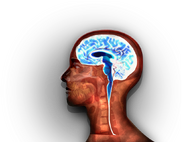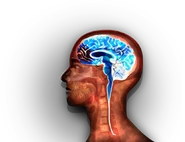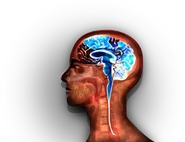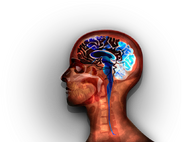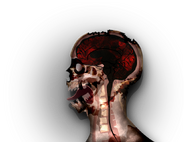| Necroa Virus | |
|---|---|
 The logo of the Necroa Virus expansion pack | |
|
Plague Type: |
Special Plague |
|
Plague Cost: |
Complete Neurax Worm (Brutal) or $1.99USD |
|
Released: |
February 26, 2013, Version 1.5 (mobile) |
Necroa Virus is an expansion pack that was released with the Mutation 1.5 update.
In-game description
Unclassified. Early analysis suggests extreme regenerative abilities.
Description
The Necroa Virus is a special plague type that is aggressive, and unknown with extreme regenerative capabilities. Its most notable trait is that when it infects humans, they become zombies (if the Cytopathic Reanimation symptom has been evolved via mutation or DNA points). The plague can be unlocked by purchasing it for $1.99USD, or by beating the Neurax Worm disease type on brutal for mobile devices, or by beating the Parasite disease on normal or higher in Plague Inc: Evolved.
The interface is a Magnetic Resonance Image (MRI) of a human male, in which his brain is highlighted blue and white (normal). As the plague evolves, the brain image gradually develops expanding, glowing red-black spots on the frontal lobe along with the blue and white. The brain eventually turns completely red and black when it becomes a zombie. Once zombified, the more severe the disease becomes and traits it has, the more gruesome and decayed the interface portrays the zombie. The Necroa Virus signature color is black, compared to the red of the normal disease types, the golden orange of the Neurax Worm, or the green of the Simian Flu.
Game overview
The Necroa Virus is usually very easy to cure, unless the player has plenty of cure-preventing genes like Genetic Mimic, or by making it more severe and/or lethal. The player must be quick to evolve Cytopathic Reanimation before the cure is deployed, unless the player is aiming for the achievement Not Another Zombie Game. Once achieved, the cure will become useless in stopping the disease, and some people who die from the disease will reanimate and become zombies. However, once the cure is complete all infected individuals will eventually be cured, thus preventing any lethal non-zombie symptoms from ravaging the human population along with the zombies. A zombie population counter will immediately replace the infected counter upon evolution of Cytopathic Reanimation. Zombies will then appear and begin to either eat or turn other humans, whether healthy or infected, into more zombies. This will initially overwhelm all countries infected by one's disease, and allow the zombie population to grow exponentially. Once zombies have formed, the player will gain access to various abilities and symptoms that will increase the lethality and effectiveness of one's zombies, along with other abilities to assist the player.
After a certain amount of time, a certain country, generally a healthy one, will start Z Com, a military organization dedicated to destroying zombies. Humans allied with Z Com soldiers will defend against the zombies. Z Com will be humanity's greatest protector and threat against your disease, and eventually, Z Com may establish a second base in another healthy country, unless the player can destroy the original Z Com base quickly enough. Z Com will try to decrease and eventually eradicate the zombie population of the world starting with the country they're based in. If not stopped fast enough, your zombie hordes will begin to succumb to decay even if the player has all of the abilities that gradually stall this. This will allow Z Com to expand unchecked to more and more countries. Ultimately, Z Com will triumph against the player if they have established themselves in too many countries, and will eventually destroy all zombies which have not yet decayed, resulting in a game over for the player. Thus it is imperative to attack new and unexperienced Z Com base as they can be easily overwhelmed and destroyed by a zombie horde.
If a country is destroyed by zombies, the zombies there will begin to starve and die off, so it is advised that the player use a Zombie Horde starting at the destroyed country, and should move them to a healthy or weak country for more food. This is indicated by a zombie bubble. The player can tap it for DNA points. Z Com's bases are represented by a fortress symbol in a blue box. Make sure the number of zombies is high before attacking a base, or else they will be massacred. Once Z Com is eliminated, and all humans are either eaten or turned into zombies, the game is over and the player wins.
There is also an in-game hidden story for the Necroa Virus. If Egypt is infected first, a popup may appear saying that explorers are going deeper into the newly-discovered tombs of Giza. The hieroglyphics will warn the explorers of an ancient plague capable of destroying humanity. The mummy excavated will have "strange bite marks". When zombies infect the world, a news headline may pop up saying that the Necroa Virus may have come from the Pyramid of Giza, indicating that the Necroa Virus is much older than Patient Zero.
There are more hidden stories. If the USA is infected first, a popup can appear saying that DarkWater is missing a scientist, meaning that Patient Zero could be this scientist. Later on, other popups will say that DarkWater has created the Necroa Virus, and another one saying that they are planning to make a kind of "zombie pacifier". If a player infects the UK first, it may say that PfiGlax made the Necroa Virus. Moreover, if the Plague is started in Ukraine, people may try to see if it was created by the nuclear accident at Chernobyl.
Traits
Transmissions
The Necroa Virus begins with with four unique transmission options: Zoonotic Shift, Blood 1, Saliva 1, and Segmented Genome. All of these options run the risk of revealing a disease early, as they increase the likelihood of mutations and thus should be used only to accelerate the amount of infected players have right before they unleash zombies on the world, and their plague has been revealed.
As its name suggests, Zoonotic Shift is needed to gain access to Bird 1, Insect, Rodent 1, Bat 1, and their respective tier 2. Blood 1 is needed to gain access to Air 1, and can be connected to the Saliva 1 transmission tree by Urogenital Expansion. Both the Blood 1 and Saliva 1 transmission trees increase infectivity through the blood and bodily fluids, as well through air and water. Segmented Genome only increase the likelihood of the mutation.
- Zoonotic Shift: Genetic shift in the virus increase infectivity, mutation chance, and makes cross species infection possible. Increases future research speed.
- Bat 1: Host range broadens to include bats, which are hard to detect. Increases infectivity and mutation chance.
- Bat 2: Partial genetic activation causes bats to mob and attack humans at night. Sign efficiently increases infectivity and attacks can be lethal.
- Rodent 1: Host range broadens to include rats. Increases infectivity, especially in urban regions.
- Rodent 2: Partial genetic activation causes rat packs to attack humans. Significantly increases infectivity, especially in urban regions.
- Bird 1: Host range broadens to include birds. Increases infectivity, land transmission, and mutation chance.
- Bird 2: Partial genetic activation triggers random bird attack on humans. Significantly increases infectivity and land transmission.
- Insect: Insects susceptible to infection. Carriers increase infectivity, especially in hot climates and chance of mutation.
- Saliva 1: Virus replicates faster in salivary glands - increasing chance of infection through contact with saliva.
- Saliva 2: Virus replicates directly in nasal cavity - significantly increasing chances of infection through contact with mucus.
- Gastrointestinal Expansion: Virus can replicate in stomach and intestines, increasing infectiousness through feces and vomit.
- Water 1: Virus can survive outside the body in fresh, warm water. Increase in infectivity, especially in humid environments and ship transmission.
- Water 2: Virus able to survive in chemically treated water. Increase infectivity, especially in humid environments and ship transmission.
- Urogenital Expansion: Virus can replicate in kidneys and urinary tract, increasing infectiousness through urine and bodily fluids.
- Blood 1: Virus enters the circulatory system, blood is now a transmission vector. Poor countries particularly vulnerable.
- Blood 2: Virus can replicate directly in the blood stream, significantly increasing infectivity. Poor countries particularly vulnerable
- Air 1: Virus bypasses alveolar macrophages in lungs to enter bloodstream. Increase infectivity, especially in arid environments and plane transmission.
- Air 2: Virus can travel on dust particles. Increases infectivity, especially in arid environments and plane transmission.
- Air 3: Virus replicates rapidly in aerosolised brain matter. Significantly increases risk of infection if interacting with zombie brains.
- Segmented Genome: Virus splits its genomes into smaller molecules - increasing the likelihood of a viable mutation during transmission.
Symptoms
The Necroa Virus starts off with the Insomnia and Hyper Salivation trees. The disease itself gives the player two options, unlike the usual one, of wiping out humanity to complete the game: the first, and more difficult one, is infecting all of humanity and killing them through lethal symptoms (Cannibalism, Psychosis, etc.). The second and easier, but still hard one, is using the Cytopathic Reanimation symptom to produce zombies.
Using the first choice, the symptoms deal with the mental state and metabolic abilities of the infected. The second choice is unique, as it brings a whole new tree of symptoms once zombies are unleashed on the world. These symptoms, however, don't hinder or damage the zombies due to their unique condition. Instead, these symptoms actually improve the abilities of the zombies. Such symptoms include:
- Hyper Salivation: Inflammation of the submandibular gland increases saliva production and infection rates
- Insomnia: Inability to sleep causes irritability and tiredness. Slows future research speed
- Fever: Increase in temperature causes general feeling of sickness and reduces concentration. Slows future research speed
- Polyphagia: Compulsive hunger forces continuous eating. Lack of hygiene increases risk of infection.
- Photophobia: Sensitivity and pain when eyes exposed to sunlight. Slows future research speed, but slightly reduces infection rates
- Gastroenteritis: Inflammation of the GI tract causes frequent vomiting. Significantly increases infection rates
- Delirium: Reduction in cognitive functions causes irritability and paranoia. Can be fatal and slows future research speed
- Coma: Pressure build-ups in the brains stem can cause loss of consciousness. Significantly slows future research speed, but reduces infection rates
- Cannibalism: Extreme compulsion to bite and eat other humans - significantly increases infectivity as well as lethality
- Psychosis: Psychotic episodes lead to occasional bursts of extreme violence, which can be lethal. Increases infectivity and slows future research speed
- Autophagia: Compulsion to bite or partially devour own body - typically fingers or own skin. Increases infection rates
- Acute Encephalitis: Multiple inflammatory lesions in the brain causes severe neurological damage resulting in death
- Cytopathic Reanimation: Formation of complex neural structures enables re-animation of damaged cells and restoration of low level vitals. Turns the dead into zombies.
- Anaerobic Resuscitation: Infected brain cells switch to anaerobic respiration. Lactic acid buildup is lethal and destroys higher brain processes and personality.
- Enhanced Sensory Integration: Nutrient flow to occipital and temporal lobes increased causing enhanced sight and hearing. Increases severity.
- Enhanced Motor Control: Nutrient flow to parietal lobe increased, improving movement and coordination. Increases severity, particularly in urban environments.
- Hyperosmia: Thinning of nasal epithelium significantly increases zombie sense of smell. Increases severity.
- Temporal Lobe Manipulation: Zombies attracted to movement and will abandon victims once dead. Prey more likely to remain and become a zombie.
- Adrenal Surge: Mutation of the adrenal cortex causes adrenaline over-production. Increases alertness and aggression of zombies.
- Masticatory Tension: Masticatory muscles become engorged, allowing zombie to bite through thick clothing. Severity increased.
- Peptide Surge: Growth hormone production triggers extreme metabolism of fat to build muscle. Enhanced strength, increases severity.
- Cathemeral Shift: Stimulation of primary visual cortex improves vision in bright sunlight. Significantly increases severity.
- Lumbrical Hypertrophy: Significantly strengthens zombie grip making it nearly impossible for prey to break free. Severity significantly increased.
- Anabolic Boost: Surges of testosterone significantly increases muscle mass and weight of some zombies. Severity significantly increased.
- Acidic Reflux: Extreme laryngopharyngeal reflux causes acidic saliva. Increases severity and gives zombies combat advantage.
- Dermal Calcification: Mutations in the endocrine system cause parts of the skin to harden and calcify. Gives zombies combat advantage.
- Vampiric Hunger: Some zombies prefer to suck the blood from its prey rather then eat its flesh. Prey more likely to remain intact and become a zombie.
- Naja Mortis: Muscle growth around the submandibular duct lets some zombies projectile spit at prey. Increase severity and zombie combat advantage.
- Cranial Elephantitis: Adenoma triggers mutated growth hormones, which encourage bone growth in the skull. Gives zombies combat advantage.
- Autothysis: Explosive mix of hydrogen sulfide and methane collects inside zombie. Significantly increases severity and zombie combat advantage.
- Bone Dysplasia: Increased bone density provides enhanced protection against trauma. Gives zombie combat advantage.
Abilities
At the start of the game, players will only have access to the basic three abilities of Heat Resistance 1, Cold Resistance 1, and Drug Resistance 1, as well as their trees.
- Cold Resistance 1: Pathogen evolves to withstand cold temperatures and climates.
- Cold Resistance 2: Lower intracellular water volume prevents freezing. Increased effectiveness in cold climates.
- Heat Resistance 1: Pathogen evolves to withstand hot temperatures and climates.
- Heat Resistance 2: Pathogen avoids cellular breakdown in high temperature. Increased effectiveness in hot climates.
- Drug Resistance 1: Pathogen becomes resistant to class 1 and class 2 antivirals. Increase effectiveness in wealthy country.
- Drug Resistance 2: Pathogen develops resistance to class 3 and class 4. Increase effectiveness in wealthy countries.
- Genetic Hardening: Pathogen becomes harder to analyze in lab. Decrease future research speed.
- Genetic ReShuffle 1: Pathogen DNA strands reassembled. More work needed to develop cure.
- Genetic ReShuffle 2: A new strain of the pathogen exists, increasing work needed to develop a cure.
Unique Abilities
- Mummification: A severely decayed zombie is able to enter a state of hibernation. Reduces rate of zombie decay.
- Horde Instinct: Active ability lets zombies form hordes to travel across land and water to attack new lands.
- Horde Mentality: Zombies more likely to follow others. Zombie horde size increases into the thousands.
- Horde Vocalisation: Horde leaders attract nearby zombies with distinctive moans. Hordes can have hundreds of thousands of zombies.
- Horde Pheromones: Horde leaders produce pheromones to attract zombies to them. Zombie hordes can be millions strong or more.
- Structured Travel: Zombies focus on horde leaders - focusing the horde on the direction of travel and increasing travel speed.
- Drifting Fermentation: Controlled decomposition causes zombies to bloat. Horde can drift in sea currents - significantly increasing ocean travel speed.
- Dyskinetic Movement: Involuntary movements keep zombie coordinated with the horde - improving movement speed.
- Echopraxia Frontal lobe damage causes infected to mimic each others' movement patterns, improving navigation of obstacles and overall speed of horde.
- Engorged Quadriceps: Nutrients are stripped from other parts of the corpse and used to repair leg muscles to improve horde speed.
- Autolytic Decay: Virus slows release of digestive enzymes from cells' lysosomes - slowing decomposition of corpse.
- Putrefactive Resistance: Virus prevents anaerobic microorganisms from digesting proteins - slowing decomposition of corpse.
- Liquefactive Resistance: Virus denatures hydrolytic enzymes, slowing liquefactive necrosis and decomposition of corpse.
- Regenerative Activation: Active ability enables neurological regeneration in the brains of infected corpses - effectively reanimating some of the dead.
- Ambush Predation: Reanimated zombies often remain still - waiting for humans to approach them. Reanimated zombies get combat advantage.
- Liquefactive Necrosis: Reanimated zombies have partially liquefied internal organs, which rupture easily. Reanimated zombies get combat advantage.
- Regenerative Bio-Synthesis: Enhanced neurological regenerative proteins allow corpses with sever head injuries to be reanimated.
- Epidermal Digestion: Digestive enzymes break down the skin of the corpse to provide nutrients. Enables reanimation of severely mutilated corpses.
- Cranial Metastasis: Partial neuron development triggered in the lungs - allowing some decapitated corpses to reanimate.
Active Abilities
Like the Trojan Planes active ability in Neurax Worm, the Zombie Horde active ability is effective in infecting hard-to-reach countries, as well overwhelming countries, especially ones where Z Com is established. Its abilities both increase the horde's speed and effectiveness when crossing oceans, as well as increasing the horde's coordination and size to the point where the final abilities in its tree of this type allows hordes to number in the millions. Finally, the Reanimate active ability allows for the reanimation of deceased zombies and corpses. This ability is effective in replenishing destroyed countries by zombie populations for attacks on other healthier ones, as well as wearing out the Z Com when your initial zombie force proves to be ineffective in overwhelming them at first. Its upgrades continue to improve the combat effectiveness and abilities of the zombies reanimated.
Positive attributes
The symptom Cytopathic Reanimation renders the cure useless in stopping a players disease. Over the course of the game while playing this disease type, one can amass a large amount of DNA, which can be incredibly useful to those trying to obtain a victory with no zombies, or quickly decimate human populations with evolved zombies. The zombie symptoms prove to be very useful in improving their combat effectiveness and severity against humans.
Active Abilities also allow for the player to infect healthy countries with zombie hordes, as well as reanimating the dead.
Negative attributes
For this plague type, transmissions increase the chance of symptom mutation. As a result, few transmissions can be purchased in order to prevent mutation that could risk early detection, which is an advantage that one should keep as long as possible due to the disease being very easy to detect in early stages and the cure developing very fast, especially when severity and lethality are high.
With this said, it very difficult even on Normal difficulty to win with no zombies, due to the player's plague having to be in a constant state of incognito for it to infect a sizable portion of the world population.
Necroa Virus theme
Plague Inc. (and Evolved)
Gallery
Z Com fort in Plague Inc: Evolved Destroyed Z Com fort in Plague Inc: Evolved Z Com plane in Plague Inc: Evolved The Active Abilities sidebar in Plague Inc: Evolved Zombie Bubble (a new type of bubble that signals a destroyed country and it also gives you DNA Points) A screenshot of the Necroa Virus in Plague Inc: Evolved[2] |
Stages of infectivity
References
| Special Plague Types | ||||||












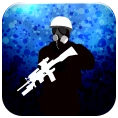
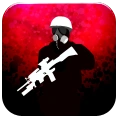

![Necroa preview.png (791 KB) A screenshot of the Necroa Virus in Plague Inc: Evolved[2]](https://static.wikia.nocookie.net/plagueinc/images/3/37/Necroa_preview.png/revision/latest/scale-to-width-down/185?cb=20140328220928)

